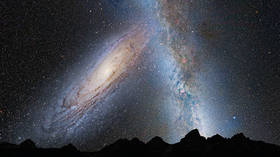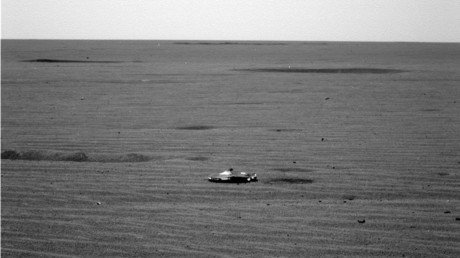There’s a galaxy hurtling towards our Milky Way that could wipe out life on Earth

A nearby galaxy is set to slam into the Milky Way and the “catastrophic event” could knock our solar system into disarray, according to startling scientific calculations.
Astrophysicists at Durham University conducted a computer simulation to find out more about the movement of the Large Magellanic Cloud (LMC), a satellite galaxy that orbits the Milky Way.
What they found was astonishing. It turns out that the LMC is set to smack straight into our galaxy.
Even though the galaxy is 63,000 light years from the Milky Way and currently heading away from us at a rate of 250 miles per second, it is set to eventually slow down and head back towards us.
Also on rt.com New universe theory suggests galaxies float in vast ocean of ‘dark fluid’The collision will shake the whole Milky Way and, while it may not directly impact our Solar System, lead researcher Dr Marius Cautun warns the collision could “knock us out of the Milky Way and into space.”
The collision will cause stars to move and increase the risk of stars being shifted into new gravitational pulls, which could change the orbit of planets. If there is even a small variation in the distance between Earth and our Sun, this could move us from the ‘Goldilocks zone’ and make the planet too hot or too cold for life to survive on.
But don’t panic just yet! Luckily, this intergalactic collision isn’t set to take place for another 2.5 billion years.
On the bright side, scientists say that this scary event would actually “restore the [Milky Way] to normality.” The Milky Way is quite an unusual galaxy, with a small black hole and far less stars in its halo than other galaxies.
Also on rt.com ‘God of chaos’: Milky Way star on the brink of massive gamma-ray supernova explosionOnce the LMC smashes into it, “the central supermassive black hole will increase in mass by up to a factor of 8,” the team explains.
“The Galactic stellar halo will undergo an equally impressive transformation, becoming 5 times more massive.”
Think your friends would be interested? Share this story!















